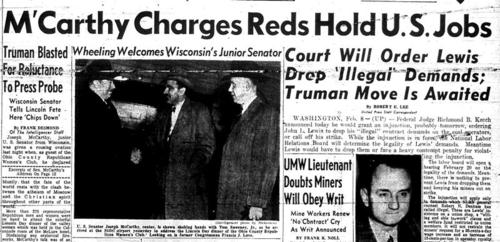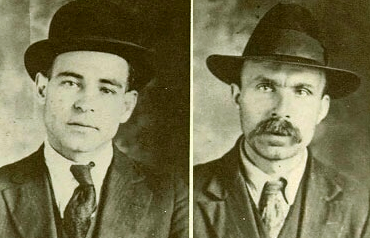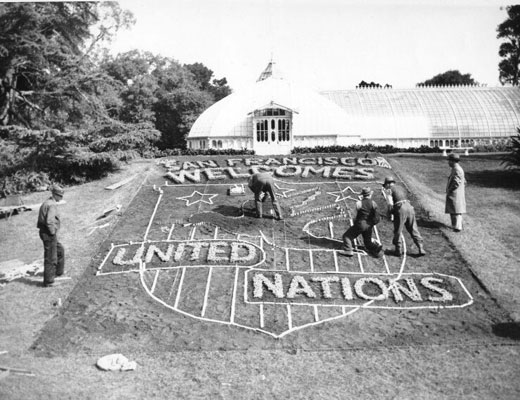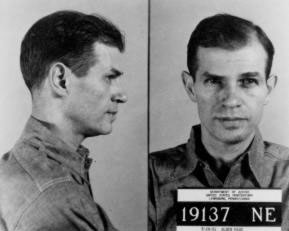Red Scare

I am supposed to be on an airplane this morning, but I am not.
I had to back out of the big trade show out west because I am not confident in my ability to navigate the tender mercies of the TSA security process with my cane and knee brace, much less horse around a rolling bag and briefcase full of electronic devices.
It is sort of a relief to have made the decision. I took the brace off the knee and almost collapsed in the kitchen last night.
I was sweating in anxiety when I got to the safety of my bed. There needs to be a time of healing, I guess, and this is it.
I am also not sharing the half-billion dollar jackpot on the Meg Millions Lottery, though a co-worker and I had a blissful coffee break contemplating what we would do with the winnings after we each bought ten bucks worth of tickets.
We talked about that at Willow last night after work, left leg dangling in the brace, and the fact that it was considerably more likely to get hit by lightning than it would be to win the lottery. Then we lurched off on the events of the week. The consensus from the right was that Mr. Holder’s Justice Department was nonplussed by the lines of questioning seeking the limit to the Government’s powers under the Commerce Clause. The Solicitor General famously seemed entirely flustered by the concept.
A countervailing word from a more liberal view (and from one who was actually in the chamber) was that the SG didn’t do as badly as the transcripts seemed to indicate. We shall see in June, I suppose.
Old Jim was so irritated by the discourse on Thursday that he staged a boycott Friday night- he sipped his beers at Lyon Hall, the former home of Dan Kain Trophies, a 1930’s example of Old Arlington architecture, a limestone-facade building whose exoskeleton was saved for faux historic value.
I used Dan’s services when I was the junior functionary in the Bureau of Personnel, back when that inestimable institution loomed on the hill over the Pentagon and not on an almost BRAC’d airfield in Tennessee some place.
Willow was busy, and not as much fun as when Old Jim is growling his disapproval of almost everything. He is a Daniel Patrick Moynahan-style Democrat. Old School.
He will follow a logical strand to its end, wherever it goes. Moynahan may have been at his best before lunch, when he was sober, but he was unquestionably a mover and shaker on the Hill, but his formidable intellect had rigor and courage. He spoke the truth about the impact of the dissolving family on the African-American community, noting something identical that is following as that social disintegration is affecting the larger society.
Some things are simple, but the controversy that attended his conclusions reverberates today. The same thing was true about the startling revelations contained in the VENONA transcripts, the existence of which were revealed in his Commission on Government Secrecy in 1995.
Yes, there were Communists under the beds in every walk of the Federal Government, and an unholy alliance between them to steal the secrets that helped us win the war, and then to unsettle the peace and contribute to the ultimate victory of the vanguard of the proletariat.
I was amazed to delve into the life and times of Alger Hiss yesterday. It was a trip to a land that is at once strange and unsettlingly familiar.
John Kenneth Gailbraith is one of those towering intellects who essentially created the conventional wisdom of his age, and ours. He wasn’t right about everything, but his treatment of how Goldman-Sachs, the architect of our melt-down worked in those days long ago is an accurate foretelling of what would come around again in the perfect storm of crony capitalism, bogus home ownership schemes and untrammeled greed.
Galbraith devotes an entire chapter of his seminal tome “The Great Crash: 1929” to the subject of “In Goldman-Sachs, We Trust,” specifying what he called “large-scale corporate thimble-rigging” that the firm (and others) practiced in the 1920s. Primarily, he identifies the “investment trust” vehicles like the GS “Shenandoah” and “Blue Ridge” trusts that never revealed they did (or didn’t) own. Sort of like that scoundrel Bernie Madoff.
Galbraith wrote:
“To reveal the stocks they were selecting might, it was said, set off a dangerous boom in the securities they favored. Historians have told with wonder of one of the promotions at the time of the South Sea Bubble. It was ‘For an Undertaking which shall in due time be revealed’. The stock is said to have sold exceedingly well. As promotions the investment trusts were, on the record, more wonderful. They were undertakings the nature of which was never to be revealed, and their stock also sold exceedingly well.”
And if one hedge fund from the same company was good, then three or 10 or 50 must be better, right? When the inevitable bubble burst, and the margin calls came flying in and the brokers began to fall from the windows, it nearly took down the country.
Change writ large rolled right over prim Mr. Hoover, a good man by all accounts, but overwhelmed with the scope of the disaster that affected every man, woman and child in the country. We got Franklin Roosevelt and his busy battalions of tinkerers.
Alger Hiss was one of them, just one of many.
He was a handsome and likeable fellow by all accounts. In the crash year of 1929, he received his law degree from Harvard, where he had been a protégé of future Supreme Court Justice Felix Frankfurter. The news of that strange roaring decade had been the fundamental basis for the formation of world views- not much different than the 1960s for the Baby Boomers.
The decade of the ‘20s featured some incendiary trials. In 1920, Sacco and Vanzetti, followers of Italian anarchist Luigi Galleani, were busted for armed robbery, and over the next seven years, tried and executed.
Galleani is best remembered for his advocacy of what he called the “propaganda of the deed” in the use of violence to eliminate “tyrants” and “oppressors.”
 (Aftermath of the Wall Street car bombing of 1920 that killed 38.)
(Aftermath of the Wall Street car bombing of 1920 that killed 38.)
They deported his butt back to Italy, but I have stood at the corner in Wall Street where followers of Galleani detonated a bomb that killed 38 people. It is pretty impressive as an act of political theater with the blood of real people. They even used a sort of a prototypical vehicle-borne IED.

(Sacco, left, and Vanzetti before their two trials and eventual execution)
Sacco and Vanzetti were accused of being the triggermen in a robbery of a shoe factory in Braintree, Massachusetts in the same pivotal year of 1920. Their trial and execution became a cause celebe. Frankfurter wrote a book about the case, and he was joined in opinion by many prominent liberals of the day, (including Hiss) that the duo was unjustly convicted.
It was a time that favored the development of radical views. World War One’s victory parade was only a year past, the old empires were teetering, and a proud red flag waved over the Kremlin in Moscow. The Spanish Flu had swept the West in two devastating waves with the returning troops, killing as many as a half million Americans- that in a population of slightly over one hundred million.
The world held an ominous visage between the ravages of a disease with an impact more profound than the Black Death and the astonishing consequences to the old order of four years of full-out industrial warfare.
Later, in 1924, as the financial bubble swelled and the decade roared, Chicago rich kids Leopold and Loeb killed for the thrill of it, stoking public angst about the amoral nature of vast wealth. Hiss then served for a year as clerk to Supreme Court Justice Oliver Wendell Holmes (a Civil War veteran of the Union, the Greatest generation of the previous century) before joining a white-shoe Boston law firm.
With FDR’s election, Hiss came to Washington to help the New Deal. He was a Justice Department attorney in 1933, before moving to the Hill to assist the Senate Nye Committee, which took WW I War Profiteering as its target. The report of the Committee was highly critical of the conduct of business, and was a contributing factor in the growing sense of American isolationism.
More significantly, Hiss was also a member of the legal team that defended the New Deal Agricultural Adjustment Administration (AAA). The new agency was the “third horse” in the New Deal’s farm relief bill, blending populist easy-money theories with Keynesian economic theory. The idea was simple enough, and had its origins in the “Cross of Gold” speech by the legendary orator and loon William Jennings Bryan. It was also the nexus of the clandestine political connection that changed the course of the nation.
Does this sound familiar? “The Act establishing the AAA said that whenever the president desired currency expansion, he must first authorize the open market committee of the Federal Reserve to purchase up to $4 billion of federal obligations. Should the open market operations prove insufficient the President could additionally have Treasury issue up to $4 billion in greenbacks, reducing the gold content of the dollar by as much as 50 percent, or accept 100 million dollars in silver at a price not to exceed fifty cents per ounce in payment of war debts owed by the cash-strapped Europeans.”
That was back in the days when a big hit in the lottery might have been ten grand, and a billion of anything was almost unimaginable.
Hiss was part of the team that defended AAA against challenges to its legitimacy. Because of intense opposition from agribusiness in Arkansas, the Administration’s team was fired 1935 in what came to be known as “the purge of liberals.” Hiss was not one of the ones let go, but allegations of his radical ties in the legal team would haunt him the rest of his life and land him in the pokey.
(Justice Owen Roberts. Photo Corbis Archives.)
The arguments before the High Court on health care this week bring echoes of what happened then. The AAA was deemed unconstitutional in 1936. FDR’s frustration with the obstructionist court lead to the to the court-packing controversy of 1937, which was resolved only by the switch in allegiance to the New Deal of Associate Justice Owen Roberts. It became known as “the switch in time that saved nine” and the continued existence of an independent High Court.
The AAA was back in 1938 legislation, by the way, and deemed constitutional this time with Owens supporting the Administration position.
By that time, Hiss and his younger brother were working for Cordell Hull at State. In time, Hiss became special assistant to the director of the Office of Far Eastern Affairs as the crisis with Japan deepened. By 1944 he was not only an active Soviet agent, but also Director of the Office of Special Political Affairs, a policy-making entity devoted to planning for post-war international organizations.
If there was a bureaucrat at the middle of everything, Hiss was that creature. He was executive secretary of the Dumbarton Oaks Conference that established the United Nations, attended the Yalta Conference of the Big Three in 1945 to determine the shape of post-war Europe.
Hiss (thankfully) was limited to the United Nations portfolio at Yalta, and drafted a memorandum arguing against Uncle Joe Stalin’s proposal to secure a vote in the new body for each of the 16 Soviet Republics in the General Assembly. In the end, a compromise gave the Soviets three votes: one for the USSR and bonus votes for Ukraine and Byelorus.
I think we should have given Uncle Joe his sixteen, and insisted on one for each of the then-48 states. It would have seemed reasonable, don’t you think? But our negotiator was working for the other side.

Hiss became secretary-general of the San Francisco United Nations Conference 1945, and then became the full director. In 1946, he left government service to serve as president of the Carnegie Endowment for International Peace, an organization whose charter seeks (in the words of the current promo on National Public Radio) “to promote real and enduring peace.”
He served there until May 5th, 1949, when he was forced to step down due to the conflagration over former Communist Whittaker Chamber’s allegations to the House Committee on Un-American Activities (HUAC) that the AAA defense team had been a cell of active Soviet sympathizers within the Department of Agriculture, and that Hiss was one of them.
Hiss had already denied the whole thing, and the subsequent revelations of Chambers made his eventual conviction on perjury charges highly controversial. In fact, the three years he spent in jail made him the poster boy for the Great Red Scare.

(Alger Hiss mug shot. Photo US Bureau of Prisons).
The political career of a young Richard Nixon began with the hot pursuit of Hiss and the secret Communists of the New Deal. You know where that all wound up.
Sorry to belabor the issue. That all happened a long time ago, but it is the back-story to Mac’s stories of life in Iowa, where the banks were closed, and people had no cash to spend. He says they traded things to get by- a barter economy right here in the USA.
I hope it doesn’t come around to that again, but wouldn’t be ironic if it did, with all the Boomers on the edge of retirement?
Everything old is new again, they say, and feeling as old as I do this morning, and as broke, I am not a bit surprised.
Copyright 2012 Vic Socotra
www.vicsocotra.com
